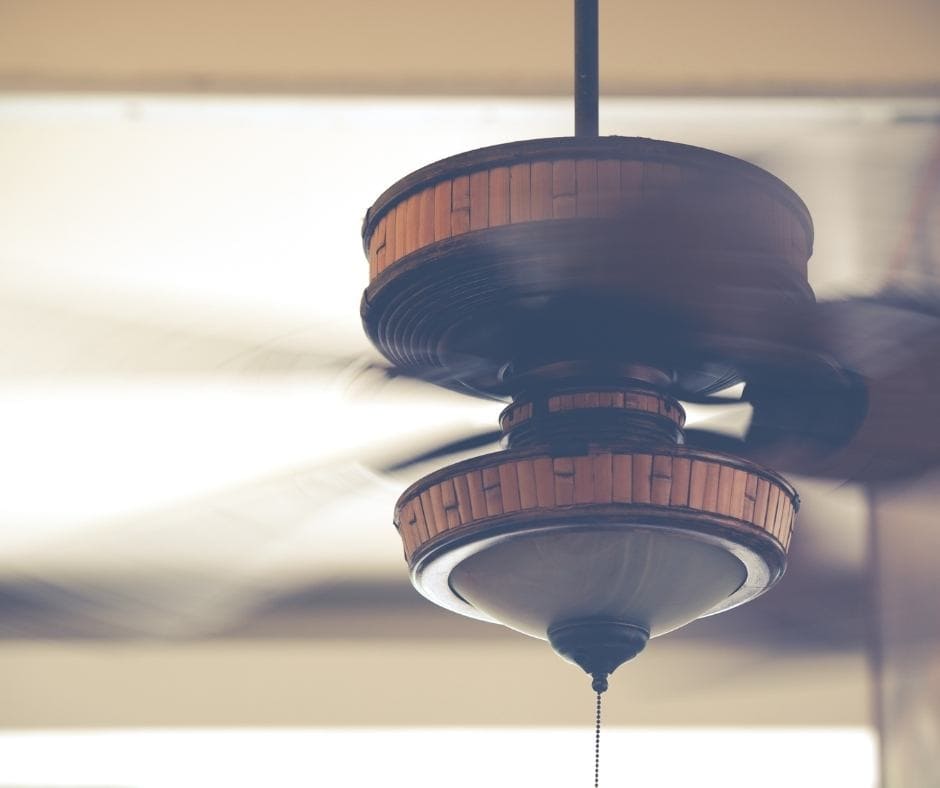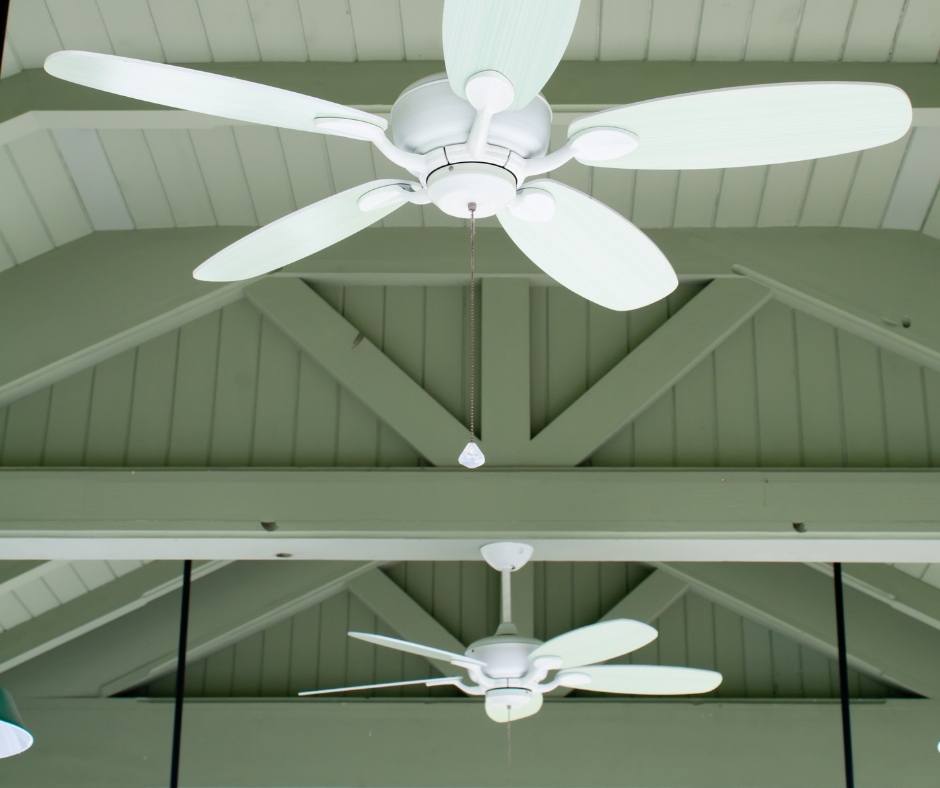If you’re shopping for a ceiling fan, you may be surprised by the amount of direct current (DC) fan motors. For years, all ceiling fan motors were alternating current (AC). That meant that you needed to plug them into wall power to work.
DC motors are a relatively new thing in the world of ceiling fans. And, they have some pretty important advantages. However, they also have some drawbacks, so it’s important to weigh all your options.
This article will help you understand what a DC motor is, how it operates in a ceiling fan and its advantages over the more traditional AC motors. We’ll also tell you the advantages of sticking with traditional models. We hope you find it helpful.
In This Article We'll Discuss
What is a DC Motor Ceiling Fan?

The power in your home comes from transmission lines as alternating current (AC). AC power is easier to generate, moves more easily down lines with less lost energy, and is easier to convert to DC.
Until recently, ceiling fans ran on AC power. You could plug them right into the wall current and turn them on. AC power is easier to move because the direction of the wave changes several times a second. However, that change of direction also causes pauses in power.
Modern electronics require a steadier source of power. That’s why DC power has become so popular. A converter will switch between the power between alternating current and direct current. Although it’s less efficient when moved around, it doesn’t create any pauses.
As a result, DC motors allow for easier changes in fan speed, less wear-and-tear on electronic circuits, are quieter, and are a little lighter than AC motors.
Since DC motors are a newer piece of technology, they’re also more expensive. In addition, it’s more difficult to service them if they break. And, if they don’t have an internal converter to switch power from AC to DC, you’ll need an external one.
How Does a DC Motor Work in a Ceiling Fan?
DC motors work in ceiling fans similarly to how the old standard AC motors did. By that, we mean that they provide electricity that makes everything work.
However, there is an important difference.
A converter takes AC electricity and transforms it into DC electricity. If you were to map out AC electricity on a piece of paper, it would look like a series of waves. There’s a peak and there’s a valley.
In between, when the wave changes directions, there’s a slight pause in power.
DC electricity gets rid of that pause and allows for steady, uninterrupted power. This is better for electronics because that pause causes electronics to shut down for the duration of the power interruption.
Constantly turning on and off causes the components to use more electricity, generates more heat, and wears out components more quickly.
Is a DC Motor Ceiling Fan Better?

In terms of performance, DC power is superior to AC power. It’s better for electronics, operates more efficiently, leads to less wear-and-tear on components, and allows ceiling fans to offer a greater range of features. Plus, if you want a remote control, it’s almost a necessity.
However, that doesn’t mean it’s superior in every way. For example AC power fans are cheaper than DC motor fans. So, if you only need a basic ceiling fan to move some air around, like in an outdoor workshop, you might not need a lot of features. And, you could save yourself some money.
Ultimately, these questions depend on whether you want to spend the money for a higher-quality fan, or if you want a more economic option with fewer features.
What is the Difference Between a DC and AC Fan Motor?
The difference between a DC and an AC fan motor is how the electricity flows.
Wall current in the United States comes in the form of AC, which is easier to move down transmission lines.
At the height of the peak and the low point of the valley, the energy will turn off. It happens dozens of times per second. Then, the electricity starts to flow in the opposite direction.
With a DC motor, the electrons flow in one direction, from Point A to Point B. If you were to map that out on paper, it would look like a straight line.
DC power is steadier and better for electronics.
Can a DC Fan run on AC?
DC motors can run on AC power. So, if you have a DC fan and the converter component burns out, it should be able to operate in the short term.
But, is that a good idea? Almost always, the answer is no.
Things that run on electricity were designed to handle one of the two major kinds of current. When it comes to DC fans, most of them are expensive and are designed for use with electronic components.
Electronic components burn out much more quickly with AC than DC. The use of AC could also cause them to malfunction.
Conclusion

Ceiling fans powered by DC motors are lighter, quieter, and more energy efficient. Those are big reasons that you might want to purchase one.
They’re also newer than those powered by AC motors. That means they cost more money and it’s more difficult to find customer support for them. So, maybe you may want to stick with the original AC motor.
We hope you found this article useful. If you did, we’d love for you to leave a comment down below, or share an insight we might have overlooked. We also invite you to share it on your social media networks.

